The new American dream
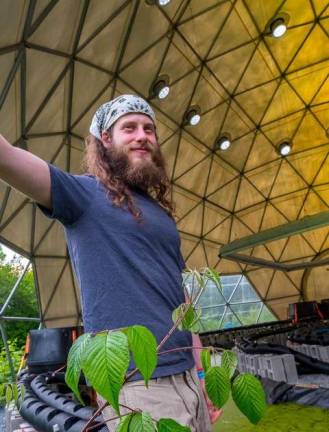
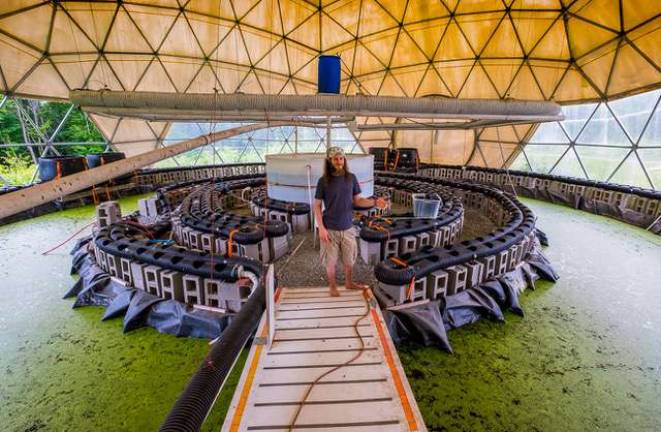
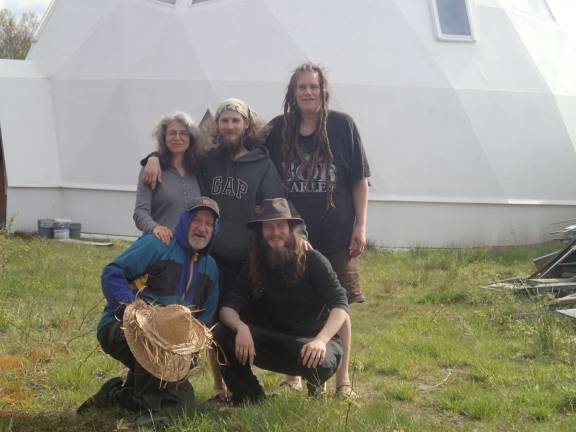
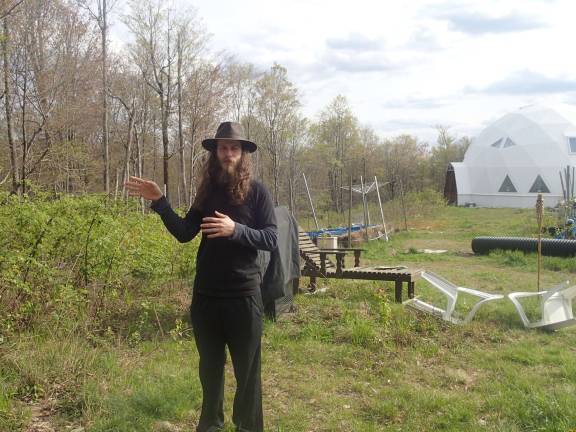
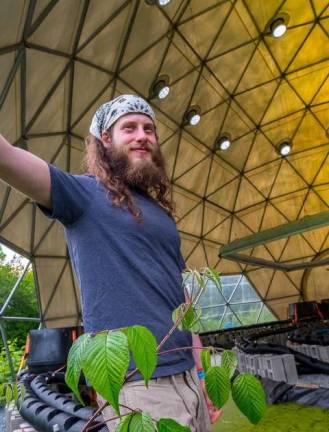
They made it to the big house in the suburbs. Then they 'went a little cuckoo.'
By Becca Tucker
The Kovalyovs eat eight bananas at a sitting. That's how they're supposed to be eaten, shrugs the father, Alex. That's why they grow in bunches, adds Sam, 28.
Even the dog has recently switched over to the raw vegan family diet. A typical meal for Shadow, their rescue German Shepherd, is two bunches of bananas and a head of lettuce.
They didn't always eat this way. Growing up, Sam and his brother Fred ate Burger King or McDonald's almost every day. It was the “classic immigrant lifestyle,” said Sam, embracing all things American. Their parents had emigrated, separately, from the Soviet Union as teens and met studying computer science at Brooklyn College. With Alex working as a computer programmer and Maya as a manager on Wall Street, they moved out of Brooklyn to raise their two sons in a six-bedroom house in suburban New Jersey. It seemed like they had achieved the American dream — except that young Sam was suffering chronic ear infections and frighteningly high fevers.
“It takes a while,” said Sam, of their fast food diet, “to realize it's poison.”
Sam's sickly childhood eventually launched the family, when he was about nine, into the health movement. They opened an organic internet café in 2001 in Fanwood, NJ, 20 minutes from downtown Manhattan but about a decade ahead of its time. Those scary fevers also launched Sam on his life's path: bearded and long-haired, he's now a plant-based nutritionist and an avid bare-footer, who even does construction shoeless. He has a PhD in natural hygiene from the College of Natural Health, an online program that, he explained, focuses on where health comes from, as opposed to the medical profession's typical emphasis on where disease comes from.
But even after the family's deep dive into the world of real food, Alex was still not well. His work was taking a toll. His weight had climbed to 318 pounds and he'd been diagnosed with diabetes. A heart attack in 2013 left him with a stent and the sobering realization that his life was in danger.
The family had recently bought 40 acres of woods in Sullivan County, NY, “just a way for family to get away from the rat race and get into nature,” said Sam. Now Alex's condition lent the move a new urgency. They packed their house up and moved its contents to upstate New York, to a piece of land they'd chosen because it had everything they wanted: a southern exposure, water, and no structures onsite. Not even a shed. They'd been researching the off-grid lifestyle since the café closed in 2006, and they wanted to build their new home a certain way.
The sons first erected a steel tunnel and insulated it with soy foam. The four Kovalyovs – plus a family friend, the dog, and a few foster cats – squeezed into a six-person camper and parked it in the tunnel. They kept warm with a wood-burning stove constructed from a pair of salvaged oil drums.
“All our family think we went a little cuckoo,” said Maya. “They are freaked out of the way we live. We had a six-bedroom home in New Jersey. Four bathrooms. Now, a camper. Why? They don't get it,” she said. “The thing is, we are happier than we were in New Jersey.”
Healthier, too. “I had already kind of changed my ways,” recalled Alex, but this was “a place where one could recover without any temptation around, because everyone ate the same way.” No cookies in the pantry, no pizza place on the corner. Just cardboard boxes of melons, cantaloupes, pineapples, coconuts, kale, lettuces and spring mix lining one wall of the tunnel, and a wooden “banana tree” from whose strings dangle bunches and bunches of bananas. They drink green smoothies every day, as they have for over a decade. The nearest neighbor lives a couple miles away, down the rutted dirt driveway, on Mud Pond Road. Once in a while they'll go out to eat at a family-owned Greek cafe in town where the owner cooks everything from scratch.
Alex has lost 145 pounds, almost half his old body weight. At 173 pounds he looks like a different person than the doughy face in his license photo – a person with cheekbones. His diabetes is a non-issue, and he takes no medicine. His cardiologist told him he didn't need to see him anymore. Even the knee pain, which had plagued him for most of his adult life, has lifted.
Google “natural hygiene,” the philosophy that Sam studied and practices, and “quackery” comes up early and often. But Alex's recovery makes a convincing case otherwise.
They don't drink caffeine or alcohol at home, although Sam might crack one at a potluck. “We are an addictive species, designed to be addicted,” Sam said. His rule of thumb is 90-10, meaning that you adhere to your regime 90 percent of the time, and the other ten percent, break it. That's “the formula that'll keep you in a sane but healthy state.”
Sam likes to point out that this is not a life of deprivation. You feel downright decadent, he said, when you sit down with a spoon and a 20-pound melon: breakfast for two.
I got a taste of what he was driving at on both of my visits. The first time, as Sam led me on the grand tour, Alex popped into the big dome to hand me a coconut, sliced open, with a metal straw peeping out of the hat, then disappeared.
On my second visit, I brought my two daughters. Again, Alex appeared, bending down to offer a handful of alpine strawberries that he'd just picked from Maya's garden. My skeptical four-year-old, still in her post-nap grump, took one, then another, then – surreptitiously – yet another. Her world had been made right, just like that.
But it probably goes without saying that this is far from a cushy existence. On my first visit, clouds of gnats formed around you whenever you stopped moving. They were nearly invisible at first. Then they started to get annoying.
Mayflies, said Sam. They'd be gone in a few weeks. He calmly fanned himself with a piece of cardboard. His parents were having a harder time. Alex was wearing a windbreaker with the hood cinched tight over his ears, and over that, a baseball cap, a get-up he acknowledged looked absurd, but didn't even think of removing for the photo. The night before, Maya's eyes had swelled up and were still a bit puffy.
Sam rolled up his own sleeves, mentioning gently to his father that if you expose more skin, they won't swarm to the one patch that's exposed. Alex did not take the advice.
Sam has always felt at home in the woods, deliberately getting lost in the nature preserve across from his house as a kid. It wasn't mayflies, isolation or lugging wood that made the move “a huge adjustment” for him, but the lack of personal space. In their old life, Sam and Fred essentially lived on the top floor of the house and their parents occupied the bottom, and they met in the middle. But eventually, said Sam, they figured out that in this new place when you want to be alone, the thing to do is head outside, rather than the old habit of going into the “cave” of one's own room. He and Shadow got lost just the other day, going out for a walk and ending up way on the other side of the hill.
I related the story of getting lost in the woods myself once, and having to spend a miserable, rainy spring night in the woods in nothing but shorts and a t-shirt. But I survived, clearly.
Sam nodded. It's amazing, he said, what our bodies are capable of. “We can push ourselves to seemingly superhuman abilities.”
That's part of why he doesn't wear shoes, to demonstrate the body's self-sufficiency. “The goal is to push people toward independence,” he said. There are all these “grown men that have baby feet and can't walk outside” without shoes. Getting your hands and feet dirty is also a big part of the natural lifestyle. We are finally beginning to wake up to the idea that dirt is not a problem, he said. It's our attempts at sterility that are making us sicker and sicker.
A month later, the mayflies were already a humorous memory. The weather was balmy, Sam had color in his cheeks and a bandana around his head, and now looked less like Rasputin and more like a guy at a Phish concert. He had just gotten back from what he called the best two weeks of his life: a course in non-violent conflict reconciliation that he took, along with participants from 16 countries, at the University of Rhode Island's Center for Nonviolence & Peace Studies. (I wondered what I might say when the baby deliberately kicked her big sister in the head. Maybe, Sam suggested, “how does it feel when she kicks you in the head?”)
They had done some spring cleaning so the tunnel felt more spacious now, and they no longer needed the wood burning stove. It was summertime, and the living was easier – but still, when I thought about living this way with my own family, it didn't seem exactly easy. Can you imagine it?
I remark to Alex that it's a testament to him, that his grown sons choose to live with their parents in a camper. “It's a testament to them, that they were able to see the light,” he said in his accented English. His sons “re-taught me what human experience is. And I already have experience with what happens when you don't” live in harmony with nature, he said. “I'm a convert.”
The brothers started building out structures, becoming more and more proficient carpenters as they went. “We call ourselves 'professional amateurs,'” said Sam. “We don't know what we're doing but we're good at doing research and learning.”
The most impressive pieces of the complex are the two domes. The central dome, constructed over the course of a month from a $60,000 kit, is capacious enough to conceivably house 15-20 people. It's meant to be an education center-slash-yoga studio with a learning kitchen, a library and a lofted bedroom and bathroom.
The second dome is the greenhouse, but it looks more like a spaceship. When it's operational, you'll have to put on booties and a white coat when you walk in through strip curtain, but no food is growing here yet. It's probably easier to let the picture do the descriptive work. See that PVC pipe, coiling around and around the dome? In those holes will grow 650 food plants, 365 days a year. The water that runs through the pipes will be fertilized by fish and legumes, cleaned by clams, and heated by exhaust that's a byproduct of the fermentation of the chickweed that grows in the moat. Did I lose you yet?
It's incredibly complex, and consummately elegant. The whole thing runs on one solar panel, responsible only for pumping water up into the blue barrel, from which it is released by bell siphon every 15 minutes. The rest runs on gravity. The system should provide more than enough food for everyone on-site, as well as bio-gas from the chickweed fermentation. Sam designed the system, in conjunction with hydroponics experts and an engineer from the New Alchemy Institute.
The fish in the well and in the moat are a major source of potential food, but they won't be eaten unless it's “necessary,” said Sam. “The fish are part of the family more than things,” he said. “We don't want to make it seem like the idea of animal usury is acceptable.”
I ask what Sam means by “necessary.” Like, you're having a big party and you want to serve something special, or like the apocalypse?
“Necessary necessary,” he said, suggesting the latter.
Looking at what they had built, an idea dawned upon Sam. What they were creating was bigger than a one-family home. This place could be a living experiment in how to grow all your own food and fuel in a carbon-negative operation that fosters community. Could it be done? He wanted to try. If it worked, they could replicate it anywhere.
Volunteers could live and learn here for months at a time in exchange for work, and overnighters could stay in a village of tiny houses, each house built from a different architectural design. The different spaces would enable them to meet people where they are.
For instance, they will have flush toilets onsite, in addition to the composting toilets in the tiny houses. What goes into the flush toilets will still be collected in underground tanks to be composted. But flush toilets are “a breaking point for some people,” Sam knows. His grandfather, for one, told them to let him know when they got flush toilets, and he'd think about coming to visit. “That's why we have so many transitional zones here,” said Sam.
The town was onboard. There was a shortage of campsites in Livingston Manor, a hamlet of a few thousand with a poverty rate of 17 percent.
In 2015, Haven for Humanity became a nonprofit. Each family member has a role. Fred, 30, is the bookkeeper and functional fitness expert. Maya is the president, as well as a Reiki master and the resident green thumb, and she babysits in town to earn a little extra money. Sam is the executive director and a natural hygienist, and has been working part-time at the post office. (Does he wear shoes at the post office? I didn't think to ask.) Alex hasn't skipped a beat with his computer programming job, working on multiple screens set up on his desk in the tunnel, which is wired with high speed internet. He's also a certified pain management specialist.
Looking over havenforhumanity.org, with tabs for the future Center for Harmony, Certified Fermentary, Renewable Energy Center, it strikes me that I've heard this kind of high-flying talk before. It was in the planning stages for an eco-village that never came to be.
I mention as much to Sam. “People either go the distance and then disappear off the face of the earth, or they only go halfway,” he agreed.
The remarkable thing about what's happening here is how much of the dream has actually been built. Whether they achieve Sam's 10-15-year plan – which includes a “primal playground” where kids can run around in the trees – will depend on how much money they're able to raise, but it's not all or nothing. They are already partway there.
Already, the family hosts monthly potlucks that were originally for the “grower” community of farmers and gardeners. (Most people's dishes are home-grown, just sayin'. Nothing like a little friendly pressure to get you focused on your garden.) The potlucks have grown to include natural healers and whoever wants to come.
They Kovalyovs have resurrected the spirit of their organic café, partnering with a local health food store to host their “Rawmart,” a volunteer-run bulk buying club that makes organic food more accessible locally. Between my two visits, a company called Tentrr put up a canvas platform tent on their property that brings mostly city folks, along with a glimpse of some steady site-generated revenue, to the property. They are mulling starting a farmers' market, but one where farmers can sell on consignment, and don't have to pay a fee or stay all day.
When we last spoke, Sam was gearing up for a big summer festival, the first annual Liberty Fest, bringing together the arts, invention and wellness, and featuring Kaila Mullady, the world beatboxing champ, who happens to be their neighbor.
“Talking to people is not enough,” said Alex. “Living your life the right way, you kind of become an example. It's not a moneymaker. It's not an easy thing to do, after a lifetime of doing things one way. But it must be done.”
I marvel at how far they have come, from a suburban family to off-grid pioneers in a few years. I mention how my family is coming along, too, but so much more slowly. Last year we finally stopped buying the wood for our wood stove, and chopped it ourselves.
Eh, Sam shrugs. They, too, are in transition.
“We are city kids. We buy our chopped wood.”